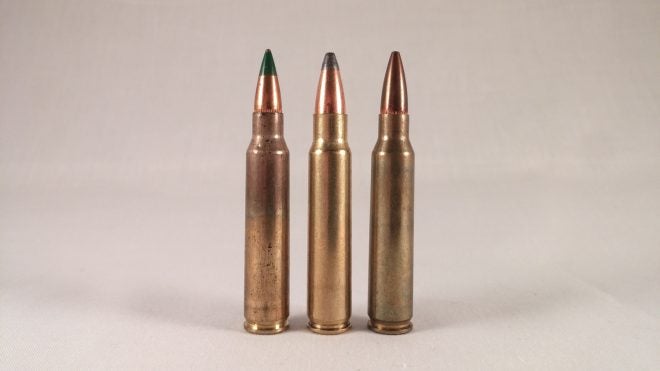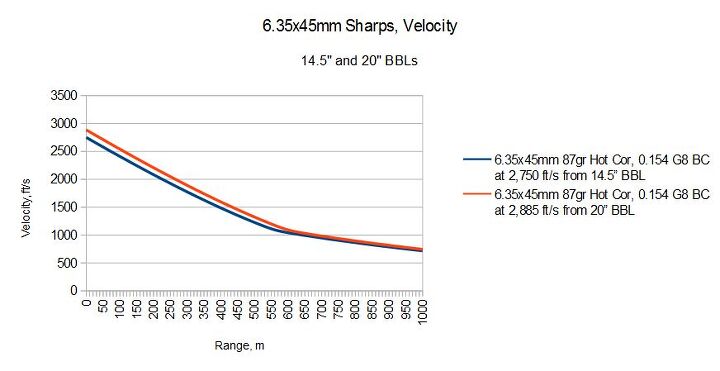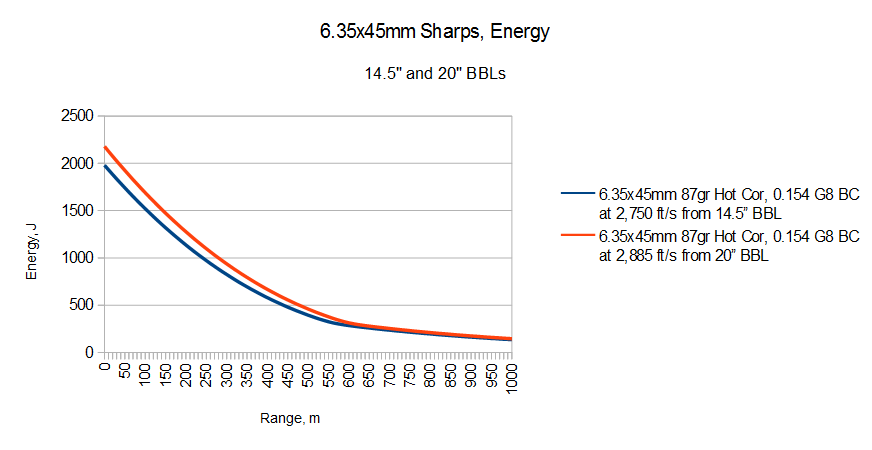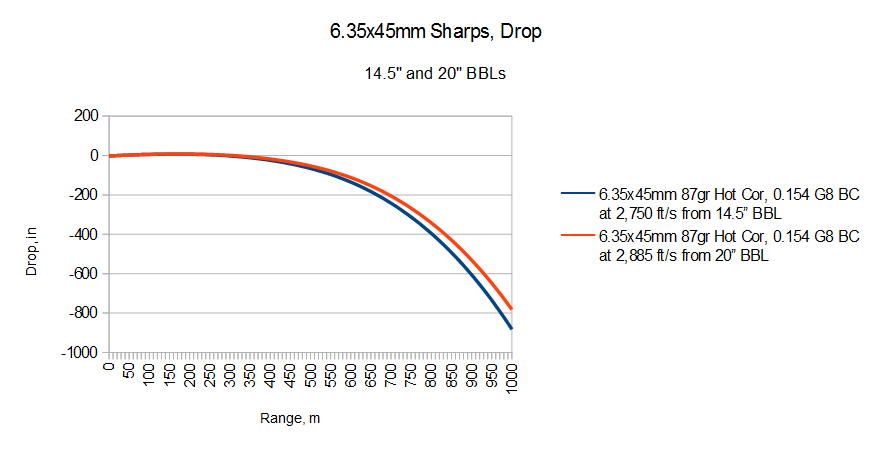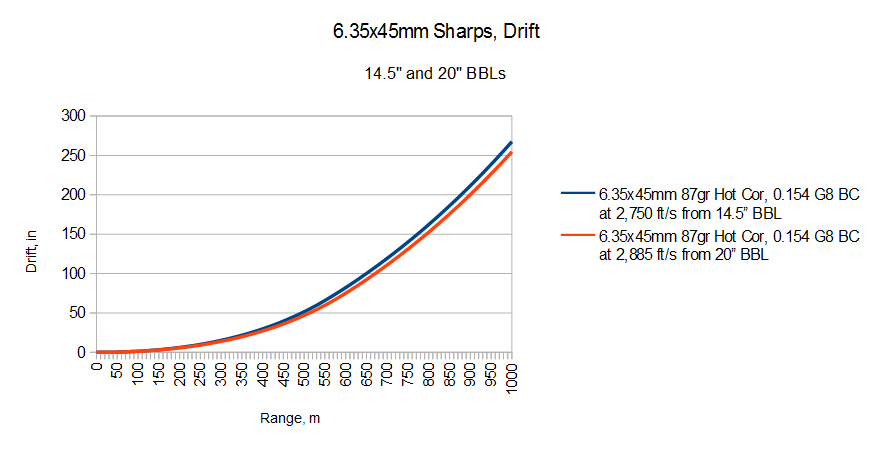On the heels of the 7.62x40mm WT, we are now going to take a look at another former wildcat based on the 5.56mm case, the .25-45 Sharps, a round I’ve discussed before. This .25 caliber round existed for years as the .25-223, a niche quarterbore caliber used mostly for predator hunting and similar rounds like John Wooters’ .25-222 Copperhead and Wayne Blackwell’s .25×47 have existed since the 1960s. However, the .25-45 Sharps is the first time the .25 caliber bore and the .222 Remington case family (in this case, .223 Remington) have been united in a factory offering, and one of the first .25 caliber rounds to be marketed to law enforcement and the tactical world, in addition to hunters. That makes it a candidate for this series, so let’s take a look at some ballistics:
Comparing the .25-45 Sharps to just the other light ball loads for the 6.8×43 SPC and 6.5×38 Grendel, it is actually the best performer, with the highest ballistic coefficient and velocity in between the other two. However, the .25-45 Sharps has no real provision for better-performing heavier ball loads, and compares much less favorably to the 5.56mm Mk. 262 round which has a higher ballistic coefficient. This makes it (from a ballistic perspective) a sort of unhappy medium between 5.56mm and larger and more common AR-platform rounds like the SPC or Grendel which can use heavier projectiles.
Weight-wise, though, the Sharps isn’t bad at all, coming in at 13.7 grams per shot for the 87gr Hot Cor load, less than any of the other rounds we’ve looked at so far, besides 5.56mm.
Note: All ballistic calculations are done with JBM’s Trajectory calculator, using the ballistic coefficient appropriate to the projectile being modeled, and assuming an AR-15 as a firing platform. Also, keep in mind that there is no single true velocity for a given round; velocity can vary due to a large number of factors, including ambient temperature and chamber dimensions. Instead, I try to use nominal velocity figures that are representative of the capability of the round in question.
 Your Privacy Choices
Your Privacy Choices
